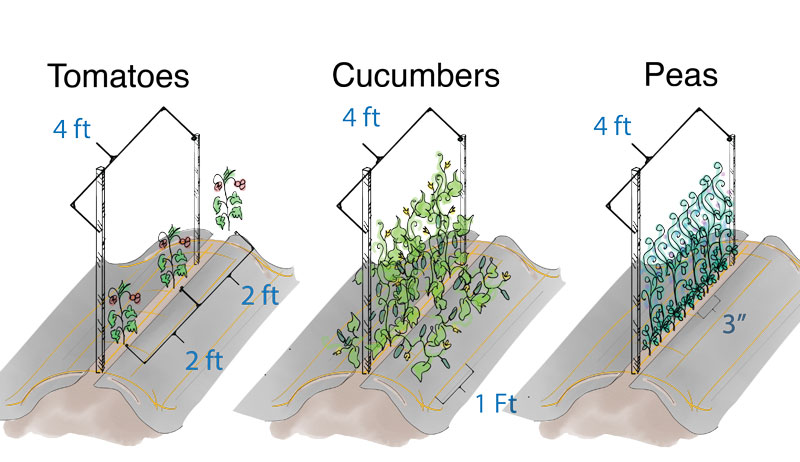
The growing season can be a busy time. There is seemingly always more to do. In light of this, opting for more permanence in our garden (or gardens) is great strategy for staying on top of essential garden tasks.
A couple of ways to establish permanence include mindful construction of garden beds and crop rotation management philosophies. And of course, permanence in the garden involves …
Building Permabeds
Permabeds are an underlining design maxim in our farm and garden designs. They save time and money, and improve yield.
When we commit to a permanent location for our garden beds, we can begin to invest in the soil health. We minimize disturbance and maximize localized soil ecosystem regeneration. This permanence allows growers to organize production around the unique environments of each garden bed.
For example, we can learn which numbered Permabeds hold moisture longer into summer. These, we reserve for water-loving melons.
In a similar manner, we can understand that beds adjacent to laneways should grow broadleaved crops. We know they compete well against encroaching grasses without hampering traffic. And because we have Permabeds, we can integrate perennials seamlessly and put a bed of Rhubarb there.
Read more: How does a Permabed differ from a raised garden bed?
Farm Management
Yet, this sense of permanence within the garden can also extend to how we manage our supplies and equipment on the farm.
Say I always use the same wrenches to shift the cultivators on my Farmall 100 between three-row weeding and one row hilling. I can opt to duplicate those wrenches, color-code them with red duct tape, and always keep them in the tractor tool box. If the job is always done with the same wrenches, then I can rely on this permanence and plan around it.
It’s like having plenty of shear bolts on hand, since you know they tend to break.
On a similar note, what if we zipper two pieces of weed barrier to make a seam in the center row between two Permabeds for planting tomatoes? Because we have chosen to zipper the weed barrier together instead of burning holes in it, we can opt to use this weed barrier for completely different jobs in the future.
This way, it remains permanently useful, not requiring “spacing of the moment” modification.
Or consider designing several beds in the garden for trellis crops, such as peas, tomatoes or cucumbers. You can simply rotate these three key trellis crops between permanent trellis beds! Just move the T-bar, rebar, or wooden trellis stakes with them each season.
Read more: Grow more, work less with farm efficiency.
Think Different
When we begin to think about permanence in our garden, our view of growing starts to change.
We find the idea of planting a micro fruit forest along the northern laneway for a long-term crop of cherries, plums and currants isn’t too difficult to manage for a vegetable gardeners. And we come to view running back to the barn for the right wrench as a permanent waste of time.
By minding permanence in our garden we find novel solutions for the many routine obstacles, while also managing a more sustainable garden ecosystem.
Grow on,
Zach




